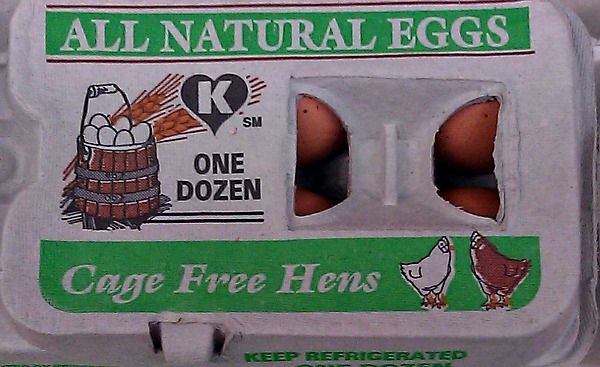 Meat and eggs labeled as “free range” or “cage free” have become increasingly popular in recent years as consumers try to source higher quality food for their families as well as to vote with their food dollars for humane and “green” conditions for the chickens themselves.
Meat and eggs labeled as “free range” or “cage free” have become increasingly popular in recent years as consumers try to source higher quality food for their families as well as to vote with their food dollars for humane and “green” conditions for the chickens themselves.
When most people think of free range, cage free chickens, they get a picture in their mind of happy chickens outdoors in the open air, completely free to express their chicken-ness by clucking around and pecking in the dirt for grubs and insects.
The truth of the matter is something else entirely. In fact, one of the more popular posts on the Healthy Home Economist Facebook page recently was a picture of the actual living conditions of free range, cage free chickens.
After seeing this Facebook post, Susan O. a reader who rescues “free range” chickens from commercial operations, sent me a series of shocking photos. Here are the photos along with her description of what these poor chickens endured, which turns out to be not much better than regular battery hens in cages.
Susan’s own words describing the 3 rescued “free range” hens – at only 1 year old:
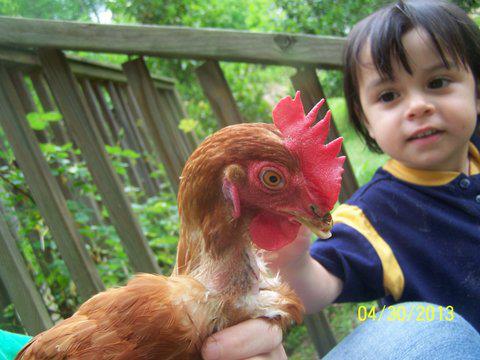
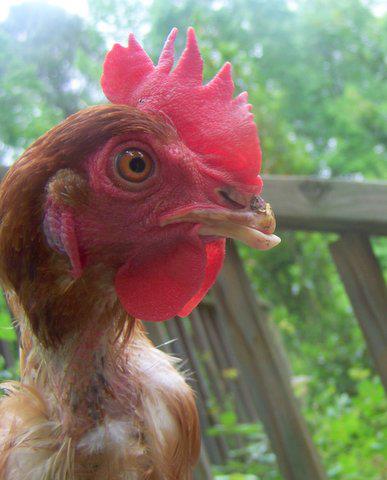
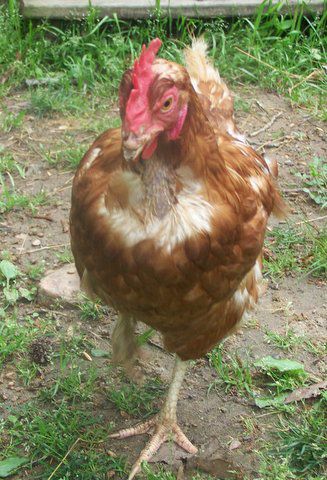
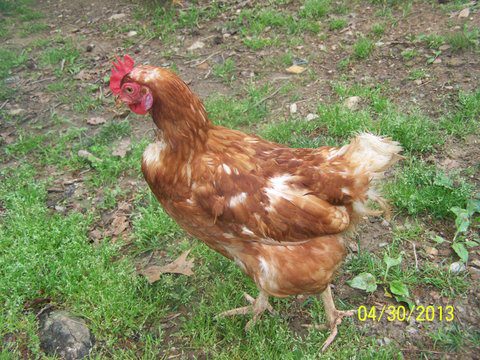
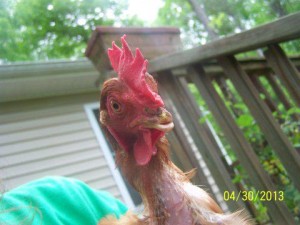
We “rescued” 3 hens from a commercial supplier who had one year old spent hens they wanted to sell. Their breed is Isa Brown.
The eggs were sold as “free-range” and “cage-free”.
We had no direct contact with the main supplier. It was very difficult to get the hens. Another person who purchases mass amounts of the hens from the egg supplier for $1.00 each was tracked down and he agreed to sell them to a group of rescuers for $10.00 each.
We’ve had these hens for a little over a month and they look much better then they used to. These photos were taken last week. When they arrived they were in much worse shape.
They’d never been outside, had no idea how to act like chickens. They wouldn’t roost at night, just pecked and walked around all night long.
I suspect their “house” was kept lit almost 24 hours a day for greater egg production. They pecked EVERYTHING. Trees, plastic, metal.
They were clueless. I had to cut their toenails. They were over an inch long!
One was limping her toenails were so long. They all had hen mites. All have feather loss. The combs on their heads were not the color they are now, but very pale, a sign of anemia and malnourishment.
The red fleshy part near the ear area was white and is still a little white today. Their eggs were without shells, had only a membrane on the outside from extreme calcium deficiency.
Another rescuer said her hen laid an egg and it broke inside her. They’ve also had their beaks cut. These hens will need to be on a special diet. They can’t crack corn or seeds with their beaks or pick up regular feed that’s not crumbled.
It’s like removing a human’s four front teeth and telling them to eat. They’ve learned to become very efficient at grabbing worms out of our compost bin. They are very gentle animals. We can pick all of them up and pet them.
People need to understand that the meat industry sees an animal as simply a product, to be used until they’re spent, then discarded like trash. The last thing the industry is worried about is our health and providing us with nutritious food.
We have a small homestead and do raise chickens and rabbits for meat, but these rescued ladies have a “free pass” to enjoy being chickens for as long as they live.
When friends shake their head and say “I couldn’t do it ” when I tell them about raising animals for meat, I draw the comparison between my healthy hens and these poor rescue hens.
If these “cage-free” hens were in this bad of shape at only one year old, I shiver to think how bad a typical battery hen would be. And no doubt, the gentleman gave us the better looking hens. Not everyone can afford pastured meat (but we manage, even on a budget 200% of the federal poverty guidelines and without taking any government assistance ), but pastured eggs can be afforded by most.
What Does a Healthy Chicken Actually Look Like?
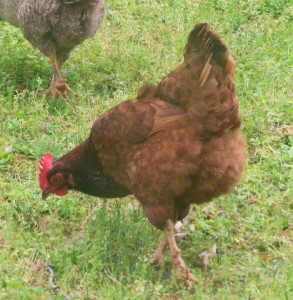 This is a photo of one of Susan’s long-time yard hens. She’s a comparable breed to the Isa Brown. She’s been truly free range since the day she was born.
This is a photo of one of Susan’s long-time yard hens. She’s a comparable breed to the Isa Brown. She’s been truly free range since the day she was born.
Note the tremendous difference between the two, “cage free” store label hen vs truly free range hen. No missing beak, feathers, white spots or mite infestation. The happy chicken is focused on the ground, pecking for insects and grubs instead of the pathetic, sad, vacant stare that signifies the horrifying animal abuse endured by chickens whose meat and eggs are labeled “free range” at the store.
In order not to be fooled into thinking your chicken and eggs come from happy birds like this one to the right when they actually come from beakless, anemic, mite ridden animals that have been so abused they can’t even peck in the dirt or crack corn, resolve to buy local!
When you buy from a neighbor or small scale local farmer who raises chickens, you can see them for yourself and note their health by the living conditions.
Abdicating responsibility for knowing exactly where your food comes from by trusting meaningless food labels in a store that proclaim eggs or meat as “free range” or “cage free” is not helping to secure quality food for your family nor is it helping to promote the cause of humane conditions for farm animals.
Sarah, The Healthy Home Economist








What about the brand The Fit Hen? Are they really free range and no GMO?
thank you so much for helping to get the truth out. truth can be very painful but is absolutely necessary to find better solutions.